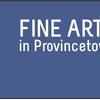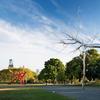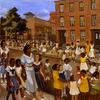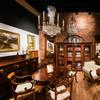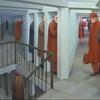GEORGE THOMPSON HOBBS (AMERICAN 1849 – 1929)
- September 30, 2021 15:57
George Thompson Hobbs was born in Philadelphia, Pennsylvania, the son of architect Isaac H. Hobbs. Like his father, he became an architect and in 1871 his father’s firm had changed its name to Isaac H. Hobbs & Son. However, that was not to be his destiny. Circa 1878 Hobbs began study at the Pennsylvania Academy of the Fine Arts in Philadelphia. In 1882, Hobbs, with Philadelphians James L. Claghorn, Joseph W. Bates, William S. Stewart, Samuel Sloan, took steps to revive the old Philadelphia Art Union, which been inactive for some years due to the antigambling law that had taken effect and making the Union’s lottery system of disposing of art illegal. Hobbs was appointed acting secretary. The years 1883 through 1885 were spent in Paris, France at the Académie Julian studying with William-Adolph Bouguereau and Robert Fleury. When he returned to Philadelphia, he brought many of his paintings with him, and almost immediately began receiving commissions for paintings. 1887 was year he finally gave up architecture for painting. A strong advocate of American art and artists, in 1891 Hobbs lead a group of artists who sought to have the existing tariff law repealed, claiming “that the present ad valorum duty so discriminates against the encouragement of American art and native artists that there is practically no school of the former and the latter are unable to make even a living with the brush.” He further stated that “[A]rt in this country,” is in a bad way, and the only remedy is the abolition of the ad valorem and the substitution of a specific duty on pictures. Our artists—the young men as yet without name and fame, I mean—are unable to compete with the foreign picture manufacturers, who have flooded the country with their rubbishy productions.” Hobbs was a member of the Philadelphia Art Club (Union) and the Philadelphia Sketch Club. He exhibited at the Pennsylvania Academy of the Fine Arts (1876-80, 1884, 1887, 1897, 1921); J. E. McClees and Son’s (Philadelphia, 1878); National Academy of Design (1889-1890); Tennessee Exhibition (Nashville, 1897); and the Delphine in the East Gloucester art colony (1904).







